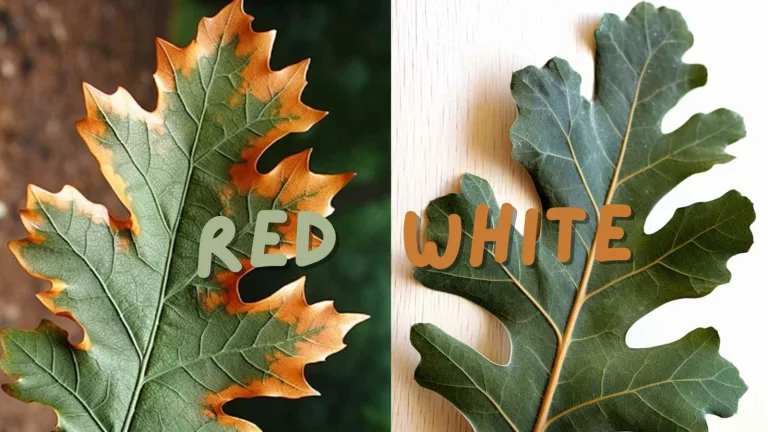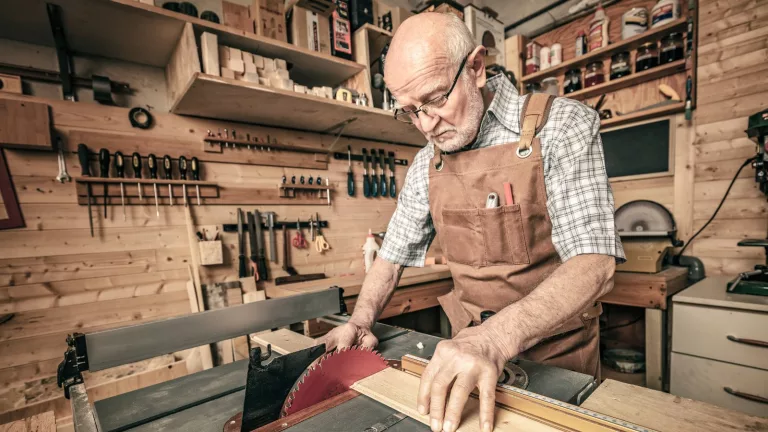Understanding Different Types of Wood for Woodworking

Summary
Understand Your Wood: Remember, each type of wood has its own character. Softwoods for flexibility, hardwoods for durability, and exotic woods for that special touch.
Consider the Project Needs: Match the wood to the project. Outdoor pieces? Go for weather-resistant woods. Fine furniture? Look at hardwoods like oak or cherry.
Finishing Matters: The right finish not only protects your piece but also brings out the beauty of the wood.
Woodworking is an art, and like any artist, you need the right materials to create your masterpiece. The wood you choose can make or break your project. It’s not just about the appearance; it’s about how the wood behaves under your tools, how it holds up over time, and of course, how it brings your vision to life.

Why is Right Type of Wood So Important?
Imagine you’re cooking a gourmet meal. You wouldn’t use just any ingredients, right? The same goes for woodworking. The type of wood you select affects everything from the ease of your work to the durability and final look of the piece. It’s about finding that perfect match for your project’s needs.
Characteristics of Wood
When selecting wood, consider these four key characteristics:
Grain
- It is a wood’s fingerprint: unique as the individual. Includes lines and swirls in the wood.
- Aesthetic appeal is determined by the grain pattern.
- Cutting and finishing are affected by the grain’s nature.
- Ranges from straight to wavy or interlocked.
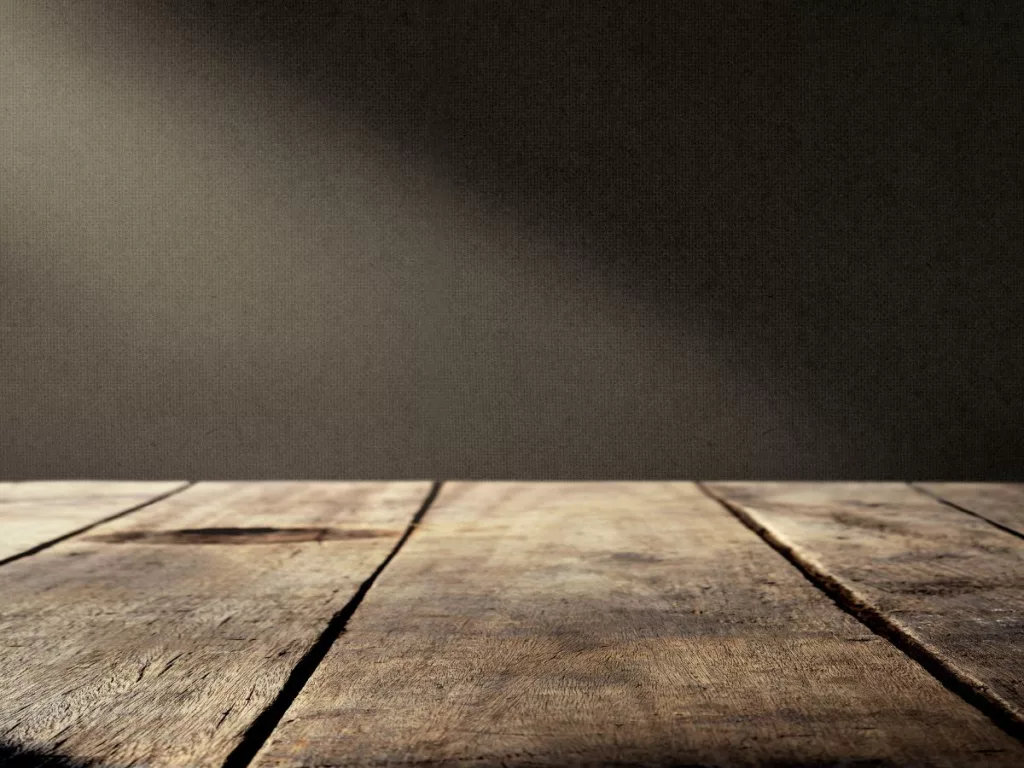
Hardness
- Hardness refers to the wood’s toughness.
- Hardwoods, like oak and maple, are robust and resist wear.
- These woods are ideal for high-traffic items, such as flooring.
- Softwoods, such as pine, are easier to work with.
- Softwoods are perfect for carving and detailed work.
- The key is to match the strength of the wood to the demands of your project.
Workability
- Workability refers to how well the wood responds to tools.
- It includes how easily the wood takes nails, screws, and absorbs finishes.
- Some woods cut smoothly and take finishes evenly, making them a dream to work with.
- Other woods may require more patience and skill due to their challenging nature.
Durability
- Durability is the wood’s ability to withstand wear and environmental factors.
- Crucial for outdoor projects where exposure to elements is a factor.
- Cedar and teak are examples of woods that resist moisture and decay.
- Ideal for outdoor applications like decks and garden furniture.
- Indoor items may use less durable but more aesthetically appealing woods.
Understanding these characteristics will help you choose the right wood for your project, ensuring not just a beautiful result but also a lasting one. Remember, woodworking is a journey – each piece of wood has its story, and it’s up to you to bring it to life in your creations. Happy woodworking!
Comprehensive Guide to Softwoods
Welcome to the cozy corner of softwoods! Often underrated, softwoods are the unsung heroes of the woodworking world. They’re not just about pine Christmas trees or cedar closets. Let’s explore how these softer, more pliable woods can bring warmth and functionality to your projects.
Pine
Ah, Pine! It’s like the friendly neighbor of the woodworking community. Here’s why it’s a favorite:

- Characteristics: Pine is like that easy-going friend who’s up for anything. It’s lightweight, has a beautiful, pale yellow color with eye-catching grains and knots. Plus, it’s softer than hardwoods, making it a joy to work with.
- Best Uses in Woodworking: Pine is incredibly versatile. It’s fantastic for furniture, decorative items, and even construction. Its ability to blend into any home decor style makes it a popular choice for bookshelves, coffee tables, and rustic pieces.
- Tips for Working with Pine: Treat Pine with respect. It’s soft, so use sharp tools to avoid tear-out. And hey, watch out for pitch (sap) pockets; they can be a bit sticky when cutting or finishing.
Selecting Pine for Different Projects
- Indoor vs. Outdoor Use: Pine is great indoors but think twice before using it outside. Unless it’s pressure-treated, it doesn’t fare well against the elements. For outdoor projects, ensure it’s properly sealed.
- Pine Finishing Techniques: Pine loves to soak up stain unevenly, so use a pre-stain conditioner for an even finish. For a rustic look, just sand it smoothly and apply a clear coat. Want to paint it? Go ahead, Pine takes paint beautifully.
Cedar
Cedar, the wood with a scent as memorable as its properties. Here’s what makes Cedar special:
- Unique Properties: Cedar has a gorgeous reddish hue and a delightful smell. It’s naturally resistant to rot, decay, and insects, thanks to its oils.
- Ideal Projects for Cedar: Perfect for outdoor settings. Think garden beds, patio furniture, and decking. Indoors, it’s great for lining closets or making storage chests.
- Preservation and Care: Cedar is low maintenance but loves a little TLC. Clean it gently, and every now and then, give it a light oil finish to keep its color vibrant.
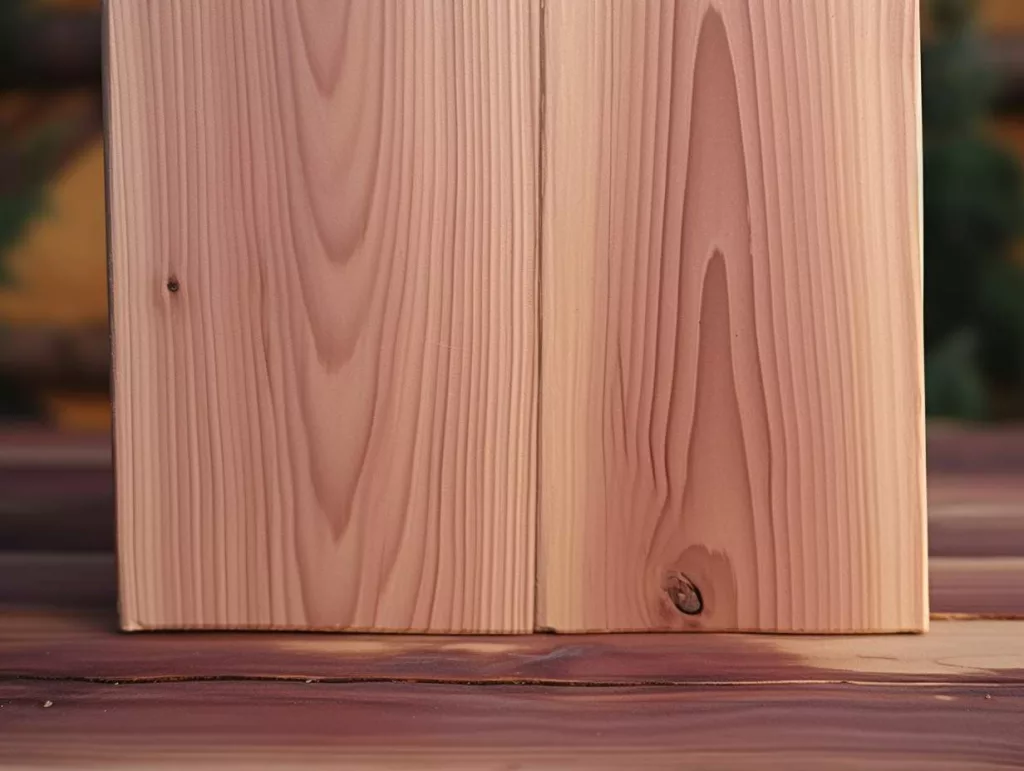
Cedar in Outdoor Woodworking
- Weather Resistance: Cedar stands up to weather like a champ. It doesn’t swell or shrink much in humidity, making it ideal for outdoor use.
- Maintenance Tips: Keep it clean and dry. Though Cedar is tough, it appreciates a good sealant to maintain its color and longevity. A semi-transparent stain every few years will keep it looking fresh.
In the world of softwoods, Pine and Cedar are like the dynamic duo – versatile, beautiful, and ready to bring your woodworking projects to life. Remember, each wood has its personality and quirks, so get to know them, and they’ll never let you down in your crafting journey!
Redwood
Let’s talk about Redwood, the superhero of outdoor woodworking projects. It’s not just another wood; it’s a game-changer for your backyard creations.
- Advantages for Outdoor Projects: Redwood is like the VIP guest at your outdoor party. It’s naturally resistant to rot, decay, and insects, thanks to its heartwood. Plus, its rich, warm tones bring a touch of elegance to any outdoor space. It’s like having a piece of the forest right in your backyard.
- Workability and Finishing Tips: Working with Redwood is a woodworker’s dream. It’s easy to cut, shape, and sand. When finishing, Redwood doesn’t ask for much. A light sanding and a clear finish or stain to enhance its natural color is all it needs. Remember, less is more with this beauty.
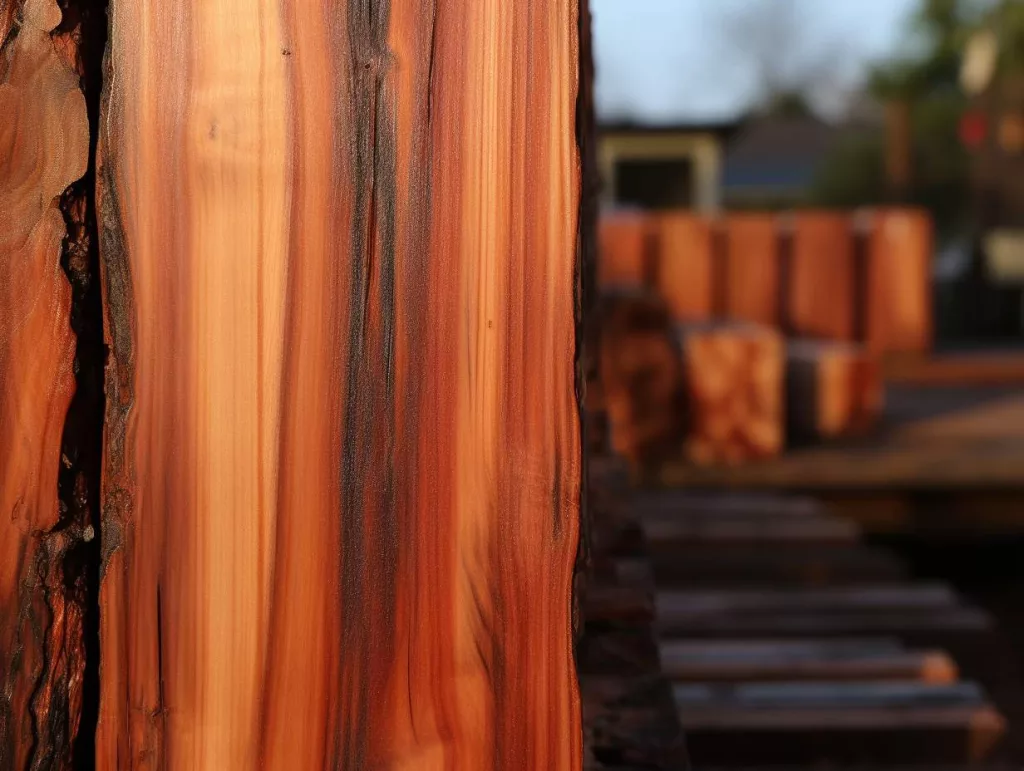
Redwood for Decking and Fencing
- Durability and Aesthetics: When it comes to decking and fencing, Redwood stands tall. It withstands the elements like a champ, ensuring your deck or fence stays strong and stunning for years. Its natural beauty, with those eye-catching reddish-brown hues, makes your outdoor space feel like a serene retreat.
- Finishing and Protection: Protecting Redwood is key to maintaining its splendor. Use a high-quality deck finish with UV protection to keep its color from fading. For fences, a clear wood preservative every few years will do the trick. And here’s a pro tip: avoid painting Redwood. Its natural oils can make paint adhesion a challenge.
In outdoor woodworking, Redwood is your trusted ally. It’s not just about building something; it’s about creating lasting beauty that weathers life’s storms.
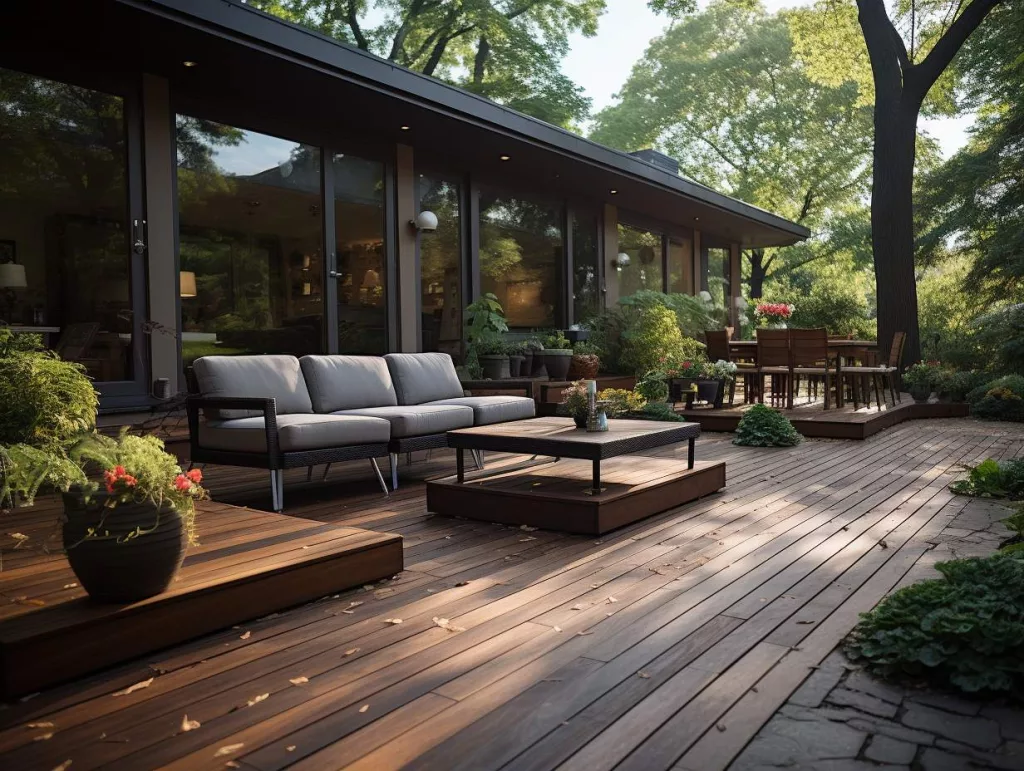
Exploring Hardwoods
Welcome to the robust world of hardwoods! These are the heavyweights of the woodworking world, known for their strength and durability. Let’s dive into the unique qualities of hardwoods and how they can elevate your woodworking projects.
Oak
It’s strong, durable, and versatile, making it a top choice for various woodworking projects.
- Varieties (Red and White Oak): Red Oak is known for its warm tones and prominent grain, making it great for pieces where you want a bold look. White Oak, on the other hand, is a bit more subdued with a lighter color and tighter grain, perfect for more refined projects.
- Suitability for Different Projects: Oak is a go-to for furniture, flooring, and cabinetry. It’s hard enough to handle daily wear and tear but still workable enough to shape into your desired form.
- Finishing Techniques: Oak takes finishes well. For a natural look, a clear varnish will highlight its grain. If you’re feeling adventurous, try a stain; Oak’s grain absorbs stains beautifully, allowing for a range of color options.
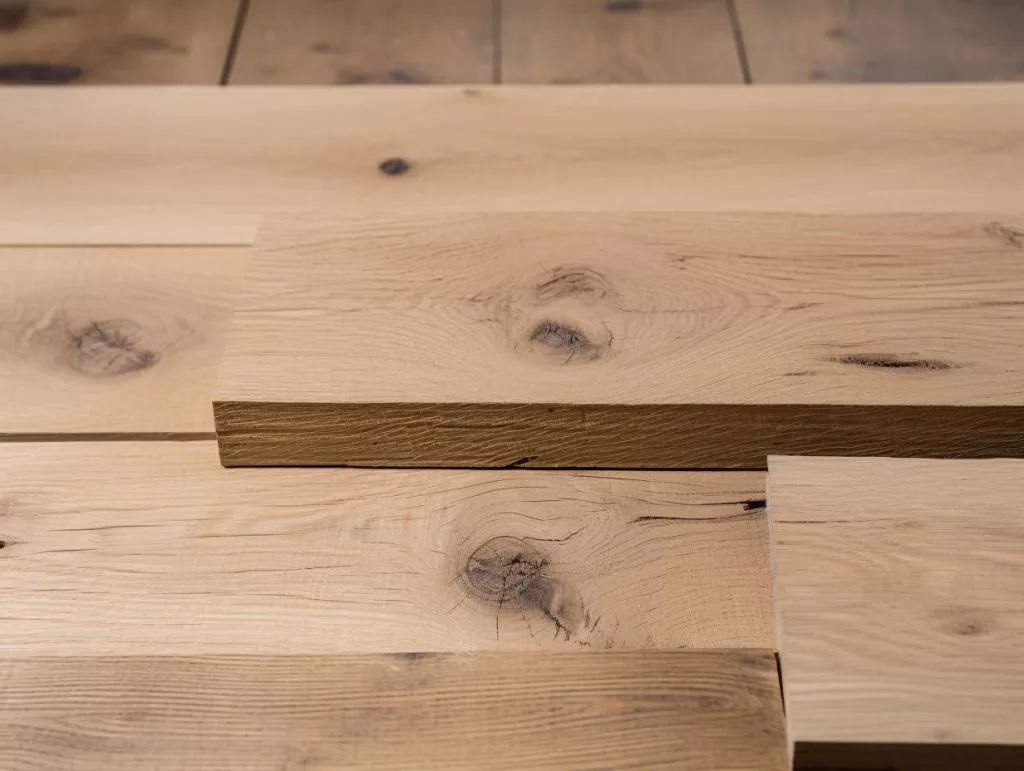
Using Oak in Furniture Making
- Strength and Durability: Oak furniture is like that heirloom piece passed down through generations. It’s strong, resists wear, and can handle the stress of everyday use.
- Staining and Sealing Tips: When staining Oak, always start with a pre-stain wood conditioner to ensure even color absorption. For sealing, a polyurethane coat will protect it from scratches and spills.
Maple
You can make anything out of maple, thanks to its two types: Hard and Soft Maple.
- Hard vs. Soft Maple: Hard Maple is tough and resistant, ideal for high-traffic items like flooring. Soft Maple, while still durable, is easier to work with and great for furniture.
- Ideal Uses in Woodworking: Maple shines in both functional and decorative pieces. Its fine grain and even texture make it perfect for detailed work.
- Tips for Achieving the Best Results: Maple can be tricky to stain due to its density. For best results, use a sanding sealer before staining to ensure an even finish.
Maple in Specialty Woodworking
- Instrument Making: Maple’s density and stability make it a favorite for musical instruments, where precise sound quality is key.
- Custom Cabinetry: For cabinets that stand the test of time, Maple’s your wood. Its smooth surface is ideal for painting or staining.
Cherry
Cherry wood is the showstopper of hardwoods, known for its rich color and smooth grain.
- Aesthetic Appeal: Cherry’s warm, reddish tones deepen over time, giving your projects a living, evolving beauty.
- Workability and Aging: Cherry is relatively easy to work with and ages gracefully, developing a rich patina that adds character.
- Project Ideas: Cherry is perfect for fine furniture, intricate joinery, and decorative pieces where appearance is paramount.
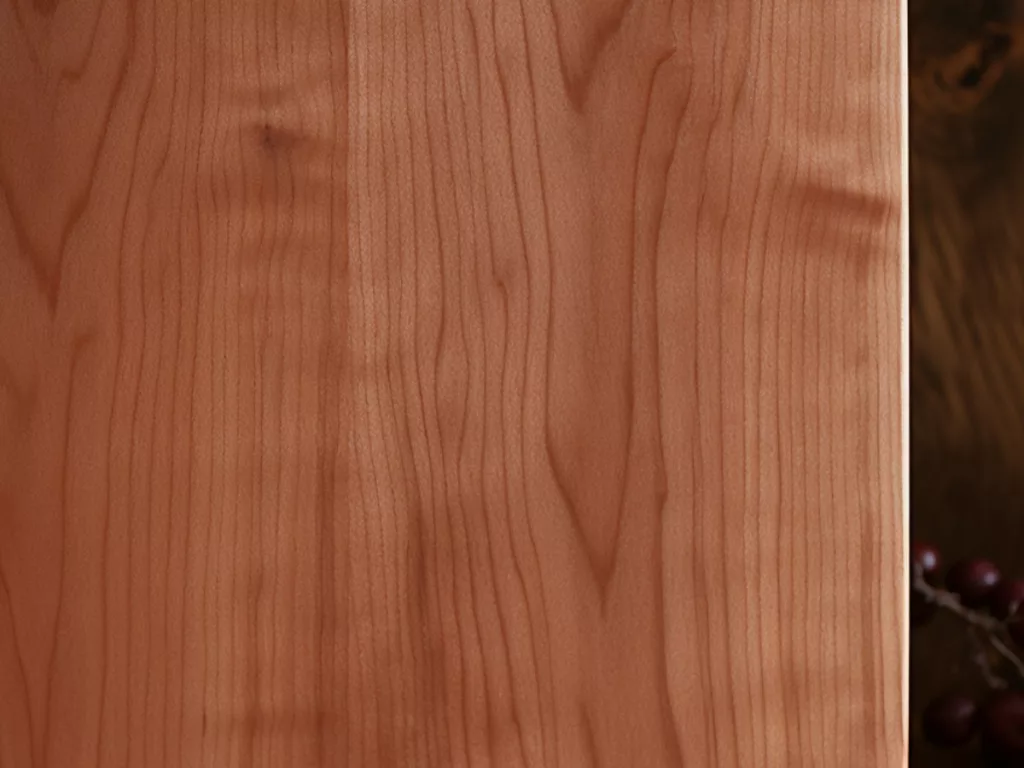
Cherry Wood in Fine Furniture
- Color and Grain: Cherry’s grain is fine and straight, lending a smooth texture that’s ideal for high-end furniture.
- Care and Maintenance: Protect Cherry wood from direct sunlight to prevent uneven aging. A regular dusting and occasional polish with a natural oil will keep it looking splendid.
Oak, Maple, and Cherry – each with its unique strengths, ready to bring your woodworking projects to life with durability, versatility, and beauty.
Exotic Woods and Their Unique Qualities
Step into the world of exotic woods, where rarity and beauty go hand in hand. These are not your everyday woods; they’re the gems of the forest, each with a story as rich as their appearance.
Mahogany
Mahogany is like the royalty of woods, known for its deep, reddish-brown color and fine grain. It’s the wood that turns heads and starts conversations.
- Characteristics and Luxury Appeal: Mahogany isn’t just wood; it’s a statement. It’s known for its durability and resistance to shrinking, warping, and rotting. Its luxurious appeal lies in its smooth texture and consistent grain, making it a favorite for high-end projects.
- Best Uses in Fine Woodworking: Mahogany is the go-to for crafting heirloom furniture, sophisticated cabinetry, and elegant woodwork. Its workability allows for intricate designs, making it perfect for pieces that demand attention.
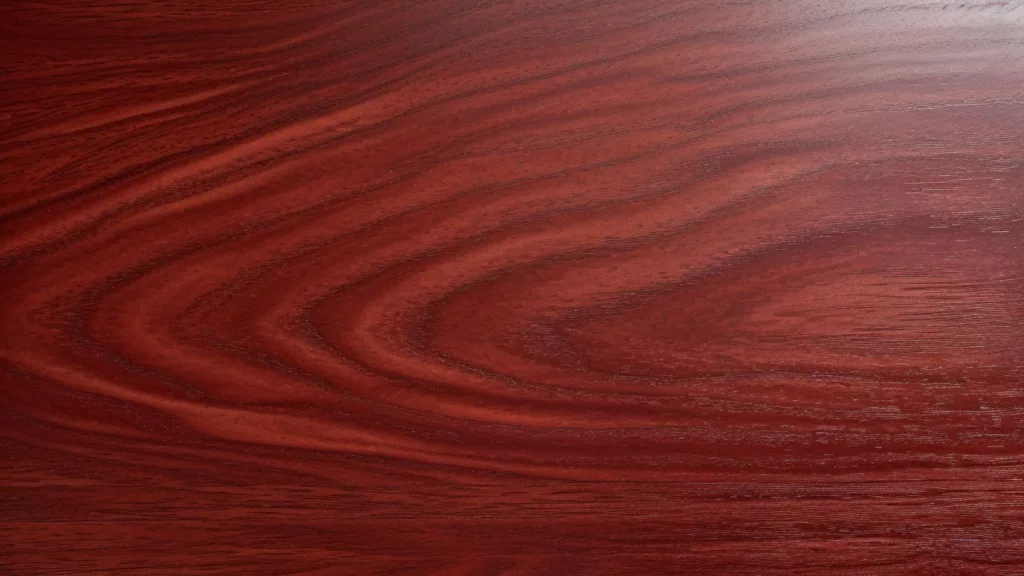
Mahogany in High-End Projects
- Furniture and Detailing: Mahogany’s rich color and durability make it ideal for statement furniture pieces. Its ability to hold detail lends itself beautifully to ornate carvings and inlays.
- Preservation Techniques: To maintain its beauty, protect Mahogany from excessive sunlight. A regular wipe with a soft, damp cloth and occasional polishing with a natural oil will keep it in pristine condition.
Teak
Teak is the adventurer of the wood world, thriving where others falter – in the great outdoors.
- Durability and Water Resistance: Teak is incredibly resilient. Its natural oils make it resistant to water, decay, and pests, perfect for outdoor and marine environments.
- Ideal Outdoor and Marine Applications: This is the wood you want for your outdoor deck, garden furniture, or a yacht deck. It stands up to the elements, aging gracefully into a beautiful silver-grey patina.
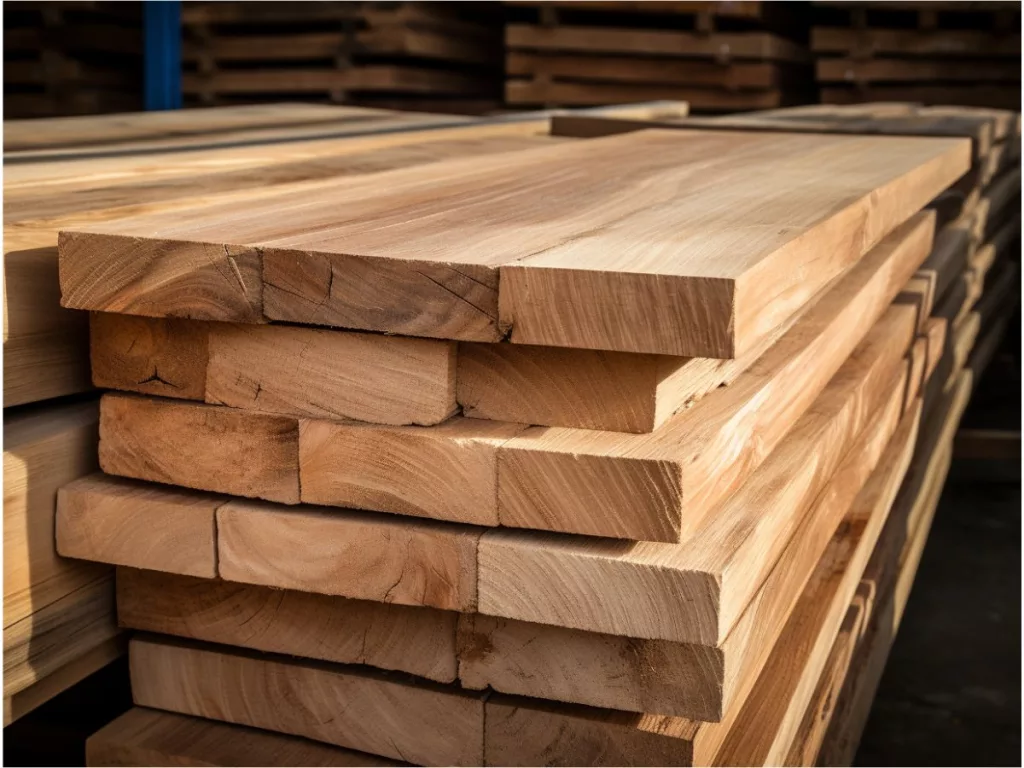
Teak for Boats and Outdoor Furniture
- Weatherproof Qualities: Teak’s ability to withstand sun, rain, and snow makes it a top choice for outdoor settings. It doesn’t just survive; it thrives, requiring minimal maintenance even in harsh weather conditions.
- Long-term Care: Teak enjoys a low-maintenance life. To preserve its natural color, apply a teak sealer annually. For that aged look, just let it be, and it will naturally weather to a charming grey.
Mahogany and Teak are like the dream team, bringing luxury, durability, and timeless beauty to your woodworking projects. They’re not just materials; they’re a legacy in the making.
Sustainable Woodworking
Hey there, eco-conscious woodworkers! Let’s chat about something close to our hearts: sustainability in woodworking. It’s not just about creating stunning pieces; it’s about doing our part for the planet. So, how do we keep our craft green and our forests lush? Let’s dive in.
Importance of Sustainability in Woodworking
Woodworking and nature are old friends. But, as woodworkers, we have a responsibility to ensure this friendship lasts for generations. Sustainable woodworking means choosing wood that’s responsibly harvested, ensuring our forests stay healthy and bountiful. It’s about leaving a green legacy, not just beautiful furniture.
How to Source Sustainable Wood
Finding sustainable wood is like being a detective in the world of lumber. Here are some clues to look for:
- Look for Certifications: Certifications are your best bet. Look for labels like FSC (Forest Stewardship Council) or PEFC (Programme for the Endorsement of Forest Certification). These mean the wood comes from forests that are managed responsibly.
- Local is Lovable: Opt for local woods. Transporting wood over long distances increases your carbon footprint. Plus, using local woods supports your community and can introduce you to some fantastic, lesser-known varieties.
Eco-Friendly Woodworking Tips
- Reuse and Recycle: Before rushing to buy new wood, see if you can repurpose old pieces. Salvaged wood isn’t just sustainable; it often brings a unique character to your projects.
- Go for Non-Toxic Finishes: Choose finishes that are low in VOCs (Volatile Organic Compounds). They’re better for the environment and your health.
- Mindful Waste Management: Be smart about your scraps. Use them for smaller projects, or find a local recycling center that accepts wood waste.
By choosing sustainable paths, we ensure that the art of woodworking continues to thrive, hand in hand with our planet.
Expert Tips
Ever wonder what secrets the seasoned woodworkers have up their sleeves? Well, you’re in luck! I’ve gathered some golden rules from the pros, and of course, through my lifelong journey in this trade, that’ll transform the way you work with wood.
Insights
- Know Your Wood: Each wood type has its personality – some are hard and stoic like oak, while others are soft and easy-going like pine. Understanding these traits is key to predicting how the wood will behave under your tools.
- Moisture Matters: Wood and moisture have a love-hate relationship. Too much moisture, and your wood warps; too little, and it cracks. Invest in a good moisture meter to keep this tricky balance in check.
- Plan Your Cuts: Measure twice, cut once – this old adage holds a world of wisdom. Planning your cuts not only saves wood but also time and frustration.
Common Mistakes to Avoid
- Ignoring Wood Grain Direction: Cutting against the grain can lead to splintering. Always observe the grain direction for a smoother cut.
- Rushing the Finish: A good finish can make or break a project. Take your time with sanding and finishing. Patience here really pays off.
- Skimping on Clamps: Never underestimate the power of clamping. A well-clamped piece ensures a clean, stable work environment.
Conclusion
Woodworking is a journey of continuous learning and experimentation. Don’t be afraid to try new woods or techniques. Each project is a chance to grow and refine your skills. Embrace the mistakes as much as the successes – they’re all part of the learning process. every piece of wood has a story. It’s up to you to shape that story into something beautiful. Happy woodworking!
Additional Resources
To keep growing in your woodworking journey, check out these resources:
- “The Essential Woodworker” by Robert Wearing, ISBN-13 : 978-0578060446;
- “Understanding Wood: A Craftsman’s Guide to Wood Technology” by R. Bruce Hoadley, ISBN-13 : 978-1561583584.
FAQs
What kind of wood should I use for woodworking?
Depends on the project; hardwoods like oak for durability, softwoods like pine for ease of work.
What wood is best for crafting?
Pine or basswood for ease of carving and shaping.
What type of wood is the easiest to cut?
Softwoods like pine or cedar are superbly convenient to cut.
What is the softest wood to work with?
Balsa is typically the softest and easiest to work with.
Can I use softwoods for furniture?
Absolutely! Softwoods like pine are great for furniture, especially if you’re starting out.
How do I prevent wood from warping?
Proper storage, acclimatization, and sealing can help prevent warping.


